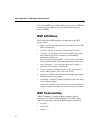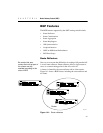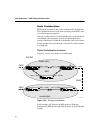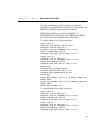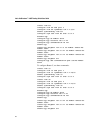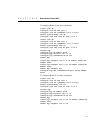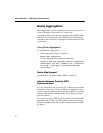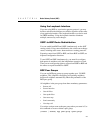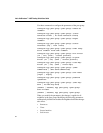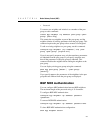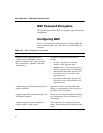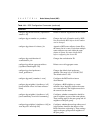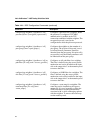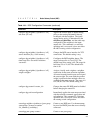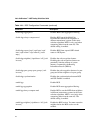
C H A P T E R 14 Border Gateway Protocol (BGP)
263
Using the Loopback Interface
If you are using BGP as your interior gateway protocol, you may
decide to advertise the interface as available, regardless of the status
of any particular interface. The loopback interface can also be used
for EBGP multihop. Using the loopback interface eliminates
multiple, unnecessary route changes.
OSPF-to-BGP Route Redistribution
You can enable both BGP and OSPF simultaneously on the 480T
routing switch. Using route redistribution, the switch can exchange
routes, including static routes, between the two routing protocols.
Exporting routes from OSPF to BGP, and from BGP to OSPF, are
disparate configuration functions.
To run OSPF and BGP simultaneously, you must first configure
both protocols and then verify the independent operation of each.
Then you can configure the routes to export from OSPF to BGP and
the routes to export from BGP to OSPF.
BGP Peer Groups
You can use BGP peer groups to group together up to 128 BGP
neighbors. This simplifies configuring and updating neighbors
because all neighbors automatically inherit the parameters of the
BGP peer group.
All neighbors in the peer group share these mandatory parameters:
• Remote AS
• Source-interface
• Out-nlri-filter
• Out-aspath-filter
• Out-route-map
• Send-community
• Next-hop-self
You assign a unique name to the peer group when you create it. Use
this command to create or delete a peer group.
[create | delete] bgp peer-group <peer-group>




